In sports, the worst coaches state the obvious. “Boys, we need to score more to win.” “Hey, I’m going to need you to defend better.” “STOP MAKING MISTAKES!” Uh thanks, Knute Rockne. Real coaching is giving constructive feedback. “He’s crowding your left; go right.” “They’re killing us in the zone; go man-to-man.” “STOP SHOOTING!” Now that’s something you can process and implement to win.
The digital shelf is no different.
On retail sites and marketplaces, it’s hard to know how well your product pages are performing beyond raw sales figures. Brands don’t get much visibility into the metrics you would traditionally use to analyze performance. Retailers don’t always share impressions, clicks, or views, which makes it impossible to calculate your conversion rates. They want you to do well, but they aren’t good at giving constructive feedback. Thankfully there are plenty of other ways to evaluate your performance on the digital shelf.
Even without access to retailers’ proprietary data, you can collect digital shelf metrics to learn more about how your pages perform. Brands track many of these metrics manually, but the size of your catalog and the number of sellers makes it extremely difficult. There are simply too many places to monitor.
Savvy modern brands use digital shelf software, such as PriceSpider’s Brand Monitor, to automatically track and measure the data they need. With the best digital shelf analytics solutions, you can turn this information into insights.
When evaluating your digital shelf performance, aim to answer questions like:
- Do my pages show up in the right places?
- Am I creating consistent, high-quality experiences?
- How do consumers perceive my products?
- How well am I using my ad spend?
- Are sellers respecting my pricing policy?
In this guide, we show you the best ways to measure your digital shelf performance, so you can identify problems and capitalize on opportunities. Let’s start with one of the most crucial indicators of success: your position in search results.
Examine your share of search
For every product in your catalog, there are a variety of terms consumers use to find its product category. You want to perform well on the digital shelf? You need to ensure that your product pages show up in search results for your most valuable keywords on each retailer’s site.
If your product pages show up in the first page of results for your target keywords, you’re doing well. Show up in the top three results, and you’re doing exceptionally well. The top results get the lion’s share of clicks, and retailers optimize their search engines to prioritize the results that are most likely to convert and meet customers’ needs. So being there is a signal that a retailer’s algorithm thinks your products are the best, and it puts you in a better position than most or all of your competitors.
On the other hand, if your products are buried on page two of the results for your categories, you’ve got some work to do. Consumers won’t buy your products if they don’t see them, which is a clear indicator that the retailer’s search engine doesn’t think you’re the best fit for a particular search.
So how do you tell if your position is falling? Or improving? You could manually type each keyword into each retailer’s search bar for each product, or just use Brand Monitor. Brand Monitor’s Share of Search feature automatically tracks your position for the keywords that matter most to each product, allowing you to examine your position over time.
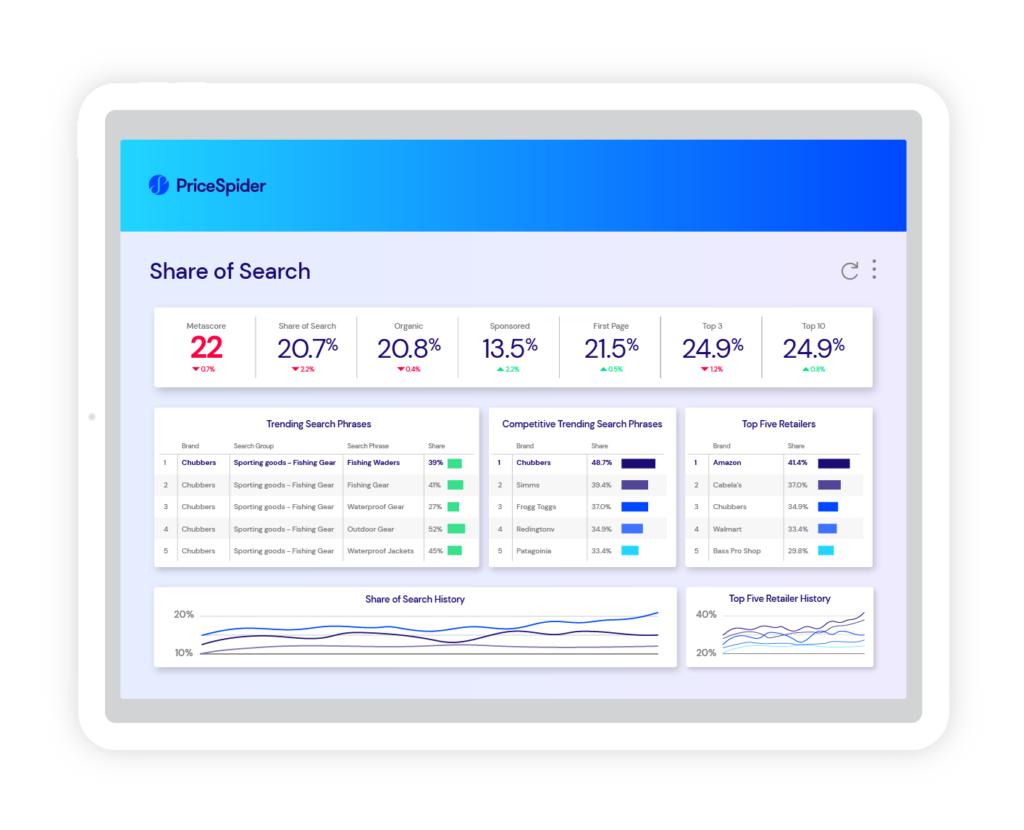
Seeing monthly or quarterly Share of Search reviews helps you assess your page performance on each website you sell through.
Evaluate your sellers’ content compliance
Your brand sets you apart from competitors. It shapes the qualities consumers associate with your products, how they feel about them, and how likely they are to buy. When you work hard to optimize your product page assets and create the most compelling copy possible, those assets better be consistent. Unfortunately, it won’t happen on its own.
Every time you update your product page assets, hundreds of pages need to replace titles, images, videos, or copy. And of course, each retailer or marketplace has its own process for handling changes.
The more websites you sell on, the more likely it is that there are multiple versions of your product pages. That means someone could have a different experience with your brand depending on where they encounter you. Some experiences will be better than others.
If you want your brand to perform the best it can, you need your best assets to get used consistently. After every update, periodically check to see if your new assets are being used. Brand Monitor is an advanced content compliance tool that makes such wellness checks easy. Using image recognition and a master copy of your updated product pages, Brand Monitor scores each seller’s page based on how well it follows your guidelines. It flags incorrect titles, descriptions, supporting copy, images, videos — it even points out when your images are correct but appear in the wrong order.
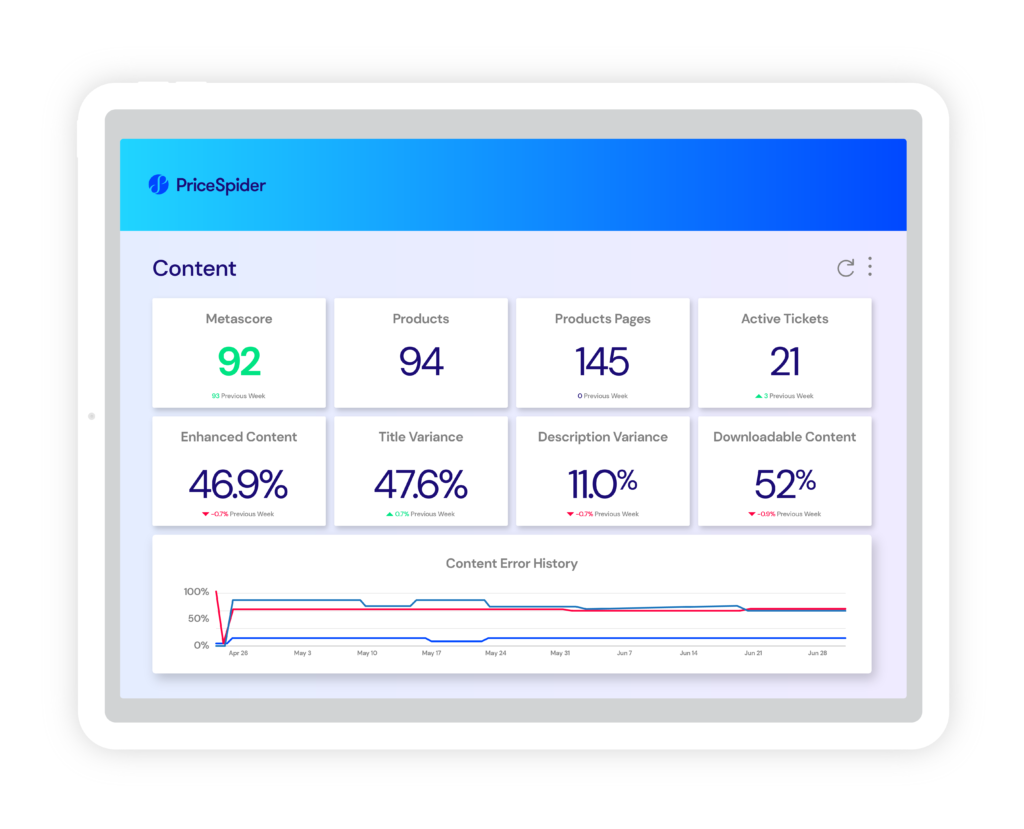
Content compliance creates consistent experiences, which leads to higher performance.
Look for wasteful ad spend
Advertising plays a key role in digital shelf performance. It drives people to your product pages from places they wouldn’t normally see you, like search results where you don’t rank organically. The great thing about advertising is that you can always buy more impressions and clicks. The challenge for most brands, of course, is that your ad budget is limited.
Unfortunately, in ecommerce, there’s a huge blindspot where brands tend to waste their budgets: advertising on out-of-stock products. According to a massive 2021 study by Adobe Analytics, “If you’re currently shopping online, one in every 50 pages you visit will show an out-of-stock message.” So if you’re advertising on 100 different product pages, at any given time, statistically, two of those product pages will be out-of-stock. Your customers can’t buy these products. That means you’re wasting ad dollars.
Your products could be out-of-stock for hours or days. During that time, you might spend thousands of dollars buying impressions and clicks that will never convert. Most brands won’t even notice. There are too many things going on to notice a product is out-of-stock, turn off any ad campaigns for that product, and then turn them back on when they’re in stock again.
That is unless you’re able to detect changes in stock availability automatically. Brand Monitor crawls your product pages in real time, flagging changes in stock status on any products you want to track (including competitors) so you can quickly decide if there are campaigns you should turn off.
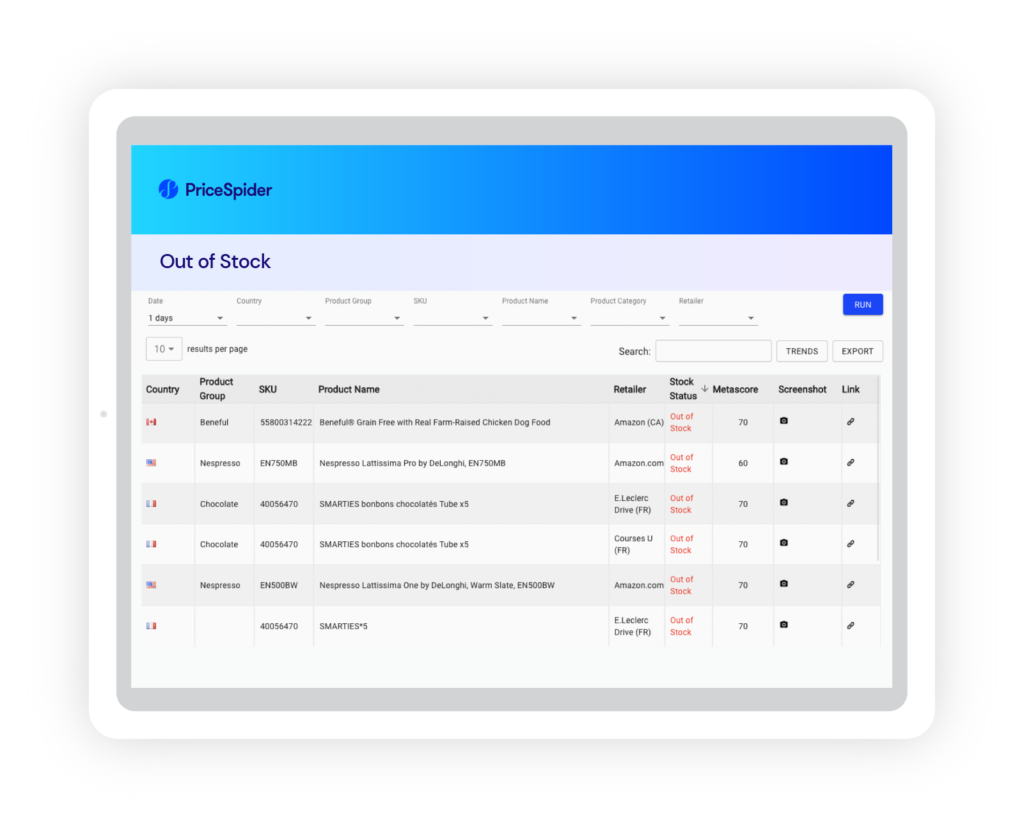
Once you’re able to identify wasteful spending, campaign performance improves and ad budget is freed for products people can buy.
Analyze trends in ratings
Ratings are powerful social proof. Consumers also use them to filter out low-quality products. They feed into search algorithms as well, helping retailers determine the best results to display.
The sweet spot is an average rating between 4.0 and 4.7 stars. Lower, and consumers assume a product is of poor quality. Higher and, believe it or not, your rating actually looks too good to be true. It’s important to pay attention to ratings trends because they can quickly cause your average to plummet. Depending on the number of ratings your product page received over its lifetime, it could take weeks or months for a trickle of one-star ratings to have an impact. So at a glance, your digital shelf performance might seem fine. But when you zoom in on last quarter, last month, or last week, you could be on a crash course for a terrible new average.
Your average ratings are important to watch. But trends in ratings are more telling. Brand Monitor lets you examine your ratings in a variety of ways. You can look at your all-time aggregate ratings from every website you sell on, look at a specific seller, or focus on a particular date range.
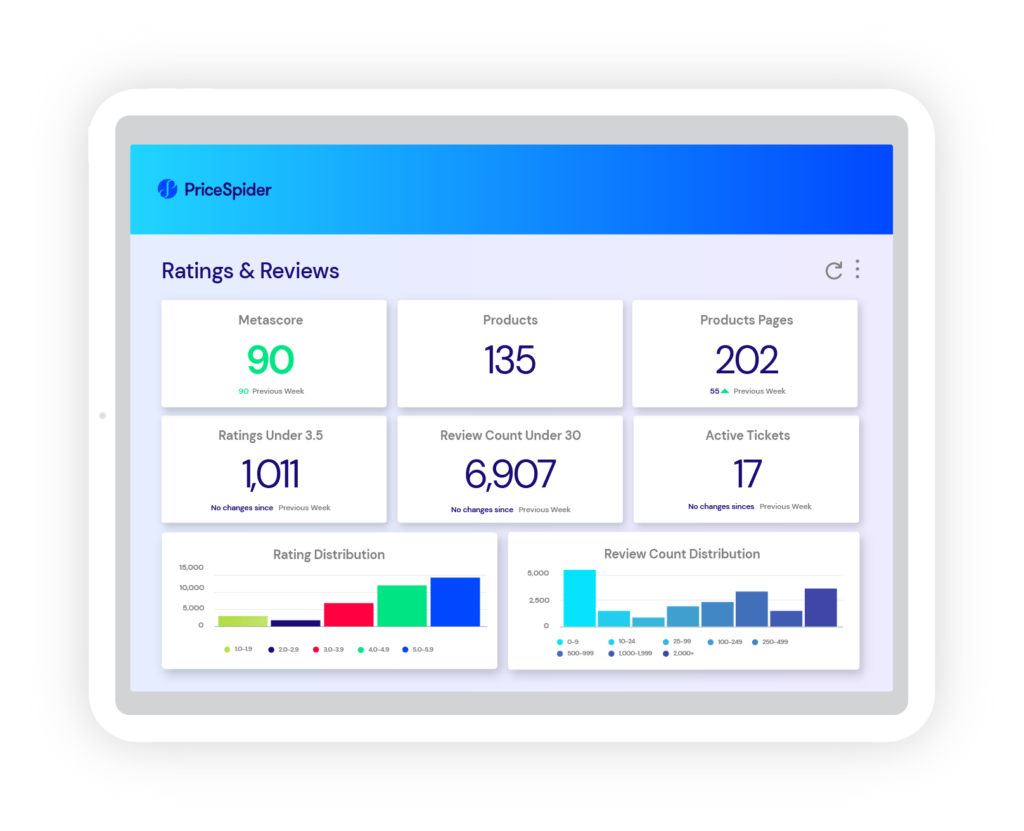
Identify themes in reviews
It’s important to keep tabs on what people are saying about your products. Customer reviews greatly influence purchase decisions. Consumers use them to find real customers who had similar needs, problems, goals, and use cases. They like to see how people felt after using your product and gather more information about what their experience may hold.
Your brand may already browse reviews periodically, skimming for good quotes or problems you need to address. But do you know the general sentiment toward your products? How do they commonly describe their experience with you?
Brand Monitor makes it easy to see overall customer sentiments, pulling the most common words and phrases from your reviews on a specific website or across the web. This shows you what prospective customers will most likely see when browsing your reviews and what kind of experience you’ve been delivering.
Consider your responsiveness
Responding to customers can have a major effect on digital shelf performance. Each response can win sales, earn trust, and relieve frustration. If you’re not replying to reviews and customer questions, your pages won’t perform their best.
When a customer leaves a negative review, your response speaks volumes about your brand — to the customer who had a bad experience and anyone else who reads the review in the future. Your responses to customer questions help people decide if your product is a good fit. It also ensures that the next time someone skims your product page and has the same question, there’s an answer waiting for them.
Count pricing policy violations
Price shapes how customers feel about your products. Along with title and hero image, it helps create a first impression. A person’s initial impression of your price serves as an anchor when they see your product elsewhere. So when consumers encounter an abnormally low price — one that violates your pricing policy — it makes your normal price or even your lowest allowed price seem too high. This leads to price erosion.
A large number of pricing policy violations is an indicator of poor performance because it demonstrates that:
- Sellers don’t respect your brand or value your relationship
- Your margins are lower than they should be
- Your brand integrity is not as strong as it could be
- Your normal prices are likely deterring some consumers
Without real-time MAP monitoring, you’re missing most pricing violations. Sellers can use repricing software to temporarily change prices, and as with most things in ecommerce, there are simply too many pages to watch at once.
PriceSpider has MAP monitoring software that works with Brand Monitor but specifically on minimized advertised price violations as it is both a discovery and enforcement tool. Prowl’s real-time tracking capabilities ensure that you catch every violation. You can even see which seller violated your policy first. As you respond to violations and issue penalties, violations will recede, and your digital shelf performance will improve.
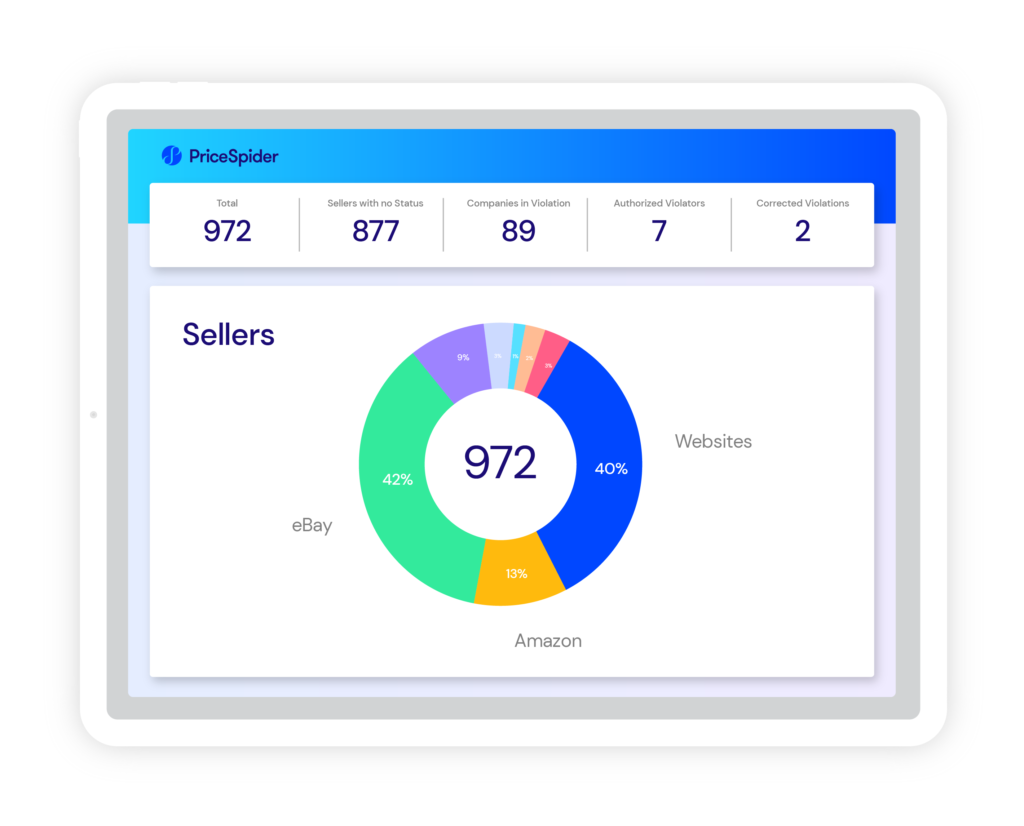
Explore digital shelf data from multiple angles
The digital shelf is bigger than any online store. You shouldn’t base your digital shelf performance on data from only one seller or one website. You also can’t afford to overlook individual sales channels. To measure performance overall, you must look at aggregate data from all the websites you sell on, and you need tools to see what’s happening at each storefront.
For example, your overall ratings last quarter may have been just fine, but what if one seller on Amazon.com is funneling a steady stream of one-star ratings your way? And when you filter reviews for that seller, you find a very different overall sentiment than what your aggregate reviews show.
Each ecommerce website is like its own ecosystem. It has its own search engine, ratings and reviews, inventory, customer base, advertising system, and sellers. Collectively, these sellers comprise the digital shelf. As a brand, you need to be able to zoom in and zoom out to measure your performance.
Get the best in digital shelf analytics
Not all digital shelf software is the same. Most platforms only collect a couple types of data and analyze it in limited ways. Brand Monitor is a comprehensive digital shelf analytics solution, purpose-built for brands like yours. Filter and analyze data from individual sellers or all of your stores, zeroing in on how you perform in search, ratings, stock availability, pricing, and more.
Want to see what Brand Monitor can do for your brand?
Schedule a demo today.

